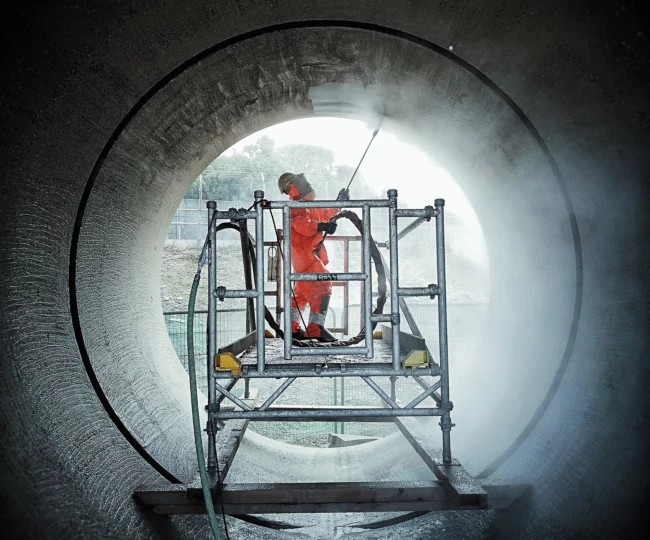Robotic Demolition
Robotic Demolition
Robotic demolition refers to the use of robotic technology in the process of demolishing structures or removing specific components. This advanced method of demolition offers several advantages over traditional manual demolition techniques.
Efficiency and Productivity: Robotic demolition can be faster and more efficient than manual demolition methods. Robots are equipped with powerful tools and attachments that can perform tasks at a faster pace. They can work continuously without the need for breaks, resulting in increased productivity.
Reduced Environmental Impact: Robotic demolition can contribute to reducing the environmental impact of demolition activities. By precisely targeting the areas to be demolished, it minimizes unnecessary destruction and waste. Additionally, robotic demolition can facilitate the segregation and recycling of materials, promoting sustainability.
Versatility: Robotic demolition systems can be adapted to various types of demolition projects. They can be equipped with different tools and attachments to handle different materials and structures. This versatility makes them suitable for a wide range of applications, from small-scale interior demolition to large-scale industrial demolition.
Robotic demolition is a rapidly advancing field that offers numerous benefits in terms of safety, precision, efficiency, and sustainability. By utilizing robotic technology, demolition projects can be executed more effectively and with reduced risks to both workers and the environment.
Remote Operation and Monitoring: Robotic demolition systems can be operated remotely, allowing operators to control the demolition process from a safe distance. This remote operation also enables real-time monitoring of the demolition site, ensuring better oversight and control over the project.
Safety: Robotic demolition enhances safety by reducing the risk to human operators. It allows demolition work to be carried out remotely, minimizing the exposure of workers to hazardous materials, falling debris, and unstable structures. The use of robots also reduces the likelihood of accidents or injuries.
Precision and Control: Robotic demolition offers precise control over the demolition process. Robots can be programmed to perform specific tasks, such as cutting, breaking, or dismantling, with high accuracy. This precision allows for targeted demolition, minimizing damage to surrounding structures or sensitive areas.
Accessibility: Robots are designed to access confined or hard-to-reach spaces, such as narrow corridors, tunnels, or high-rise buildings. They can navigate through complex environments and perform demolition tasks in areas where human access is limited or unsafe.

Robotic Hammering
Finger tip control allows precision breaking in all dimensions, for through-wall or roof penetrations as well as massive foundation removals. The small machine footprint permits ganging machines in tight areas for maximum production. Remote operation by infrared or cable control enables the robotic hammers to perform hazardous concrete demolition work while keeping operators at a safe distance. With available deployment from suspended platforms or elevated slabs, our robotic chipping hammer machines can be craned to tackle any obstacle.
Our breaking specialists operate with training to provide best-practice concrete demolition solutions on any site. Background checks, drug tests, and committed people are the backbone of our demolition company With over 3 Brokk robotic hammers, MTD can rapidly mobilize the required equipment resources to satisfy your project needs.
handheld concrete scabbling
Water jetting causes no percussive vibration, this means no micro cracks are created and there are zero HAVS issues for operators. A surface prepared by water jet is dust free, chemically clean and free from micro cracks which can cause premature bond failure.
MTD offer both handheld and robotic concrete scabbling, at over 2800 bar. We are able to create a scabbled concrete finish to various profiles. We can also remove coatings and dress concrete back to a specified level if required.


Robotic Concrete Scabbling
Deep surface preparation or “scabbling” is the basically same process as used for surface preparation but is more intense. It is a very efficient and cost-effective method of exposing the aggregate in concrete if required. This technique is often used to create a roughened surface to provide a “key” to help new coatings, sealants, or further concrete to adhere to the original.
Scabbing is also ideal where extra friction/traction may be required on a concrete surface such as pathways, roadways, warehouses or car park floors.
our awesome Services
01.
House demolition is the process of tearing down and removing a house or building. This can be done for a variety of reasons, including making way for new construction, clearing a site, or removing a structure that is no longer safe or usable.
02.
School building demolition is the process of dismantling and removing a school structure. This can be done for a variety of reasons, such as safety concerns, the need for a new building, or changes in the surrounding area.
03.
This type of demolition requires careful planning, specialized equipment, and skilled personnel to safely and efficiently remove the structure while minimizing environmental impact and ensuring the safety of nearby structures.
04.
The process of dismantling or destroying a multiplex building or structure. This could involve the use of heavy machinery, explosives, or other demolition techniques to safely and efficiently bring down the building.
05.
Wall and footing demolition is the process of removing existing walls and footings from a structure. This can be done for a variety of reasons, such as renovating a building, or addressing structural issues.
06.
The process typically involves careful planning & execution to ensure the safety of the surrounding structure and workers involved. Specialized equipment and techniques may be used to remove the columns.

